German Plum Cake (Zwetschgenkuchen)
This post may contain affiliate links. See my disclosure policy.
This authentic German Plum Cake recipe, known as Zwetschgenkuchen or Zwetschgendatschi, is made just the way you know and love it from Germany! A yeast-based cake with juicy plums and a sweet streusel topping, this extraordinarily delicious cake is one of my very favorites and is the way my Mutti and Oma made it!
For more fruity German cakes be sure to also try our German Apple Cake, Rhubarb Streusel Cake, and while not exactly “cake,” our Apple Strudel is a must!
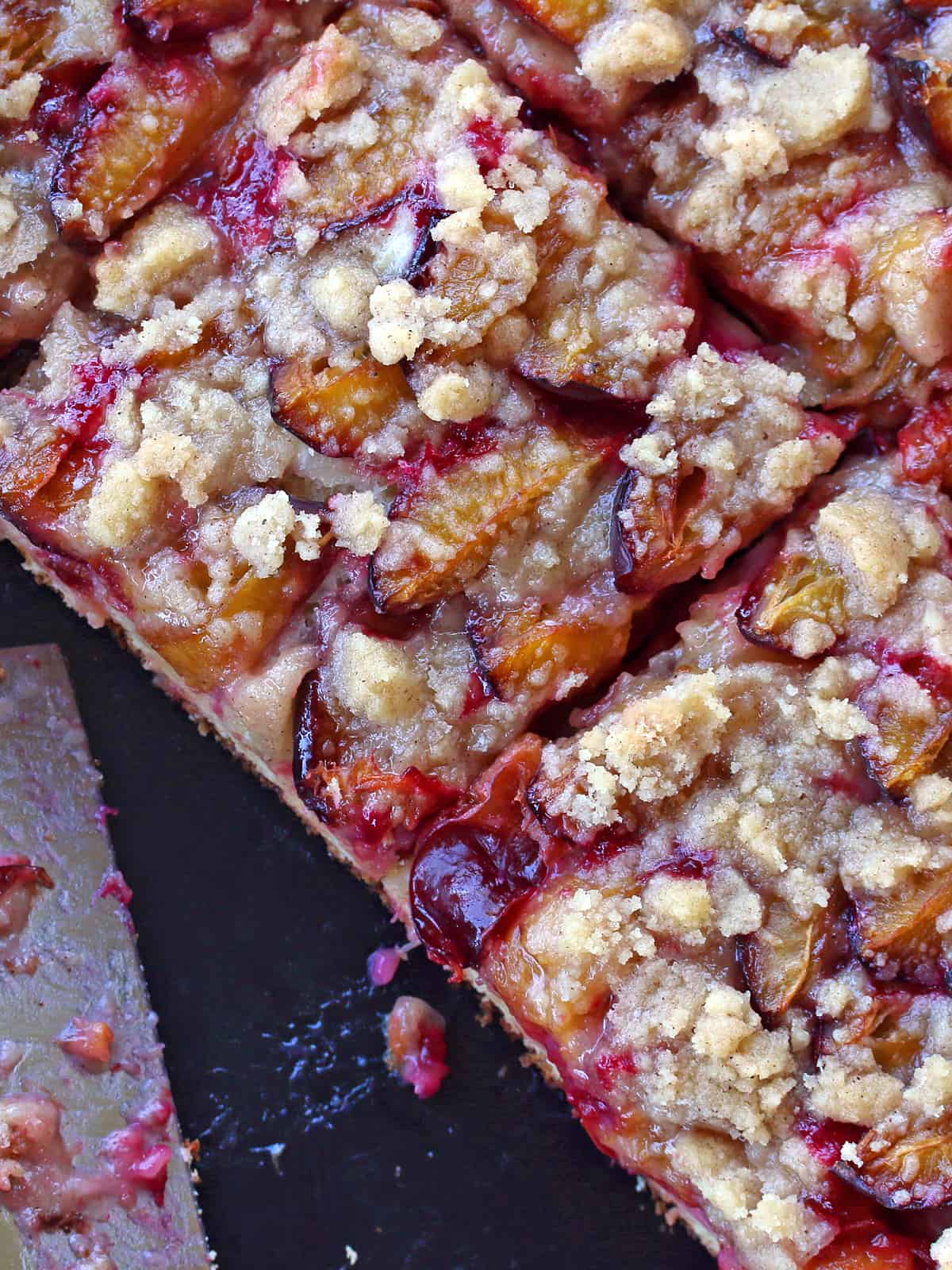
Depending on which region of Germany you’re in, German plum cake goes by a variety of names including Zwetschgenkuchen, Zwetschgendatschi, Quetschekuche or Pflaumenkuchen. I know, they’re all tongue-twisters! :)
Variations exist throughout the regions of Germany with some versions using a yeast dough while others use a shortcrust pastry known as Rührteig. Some have a streusel topping while others omit it. And some people make them round and taller while others make them rectangular in the style known as “Blechkuchen” (sheet pan cake). But whichever pastry crust is used, with or without streusel, and whether it’s round or rectangular, all of these versions showcase the plump, juicy, sweet European plums known as Italian plums.
Which Plums Do I Need to Make German Plum Cake?
To make proper German plum cake you really need Italian plums. These are small and oval-shaped and are far meatier than their Asian plum cousins. Fleshier with a lower moisture content is important because you want to have a moist cake, not a mushy cake. Italian plums are considered the most ideal for cooking and baking not only because of their texture but also because their flavor becomes more complex and delicious through cooking. Italian plum season is short, usually from September through early October, and Germans know how to seize the opportunity when it’s there. So wait patiently for plum season and then hit your local farmer’s markets for some Italian plums. Alternatively you can also use frozen Italian plums; just be sure to thaw and very thoroughly drain them before using them.
We were so lucky to have our own Italian plum trees when we lived in Washington State. When we moved to Virginia a few years ago we immediately got to work planting an orchard of fruit trees, including some Italian plums. They’re not yielding a lot of fruit yet, but they’re getting there and I’ll be ready for them!
The version of German Plum Cake that we’re making today is my personal favorite. It’s made with yeast dough, which is more time-consuming than the simpler Rührteig (shortcrust pastry) versions, but it’s far superior in my opinion. This traditional version is also sprinkled with a streusel topping. This Zwetschgenkuchen recipe is the way my Mutti and Oma made it and is typical of where I’m from in Baden-Württemberg, though this version is popular throughout Germany. This type of Zwetschgenkuchen is typically made on a Backblech (a baking sheet) versus in a round springform and cut into squares for serving.
Like most German cakes, this German plum cake is not overly sweet. It has a nice balance between sweet and tart with just a touch of warmth from the cinnamon. The riper the plums the sweeter the cake will be.
This German plum cake will keep for 2-3 days. And although the streusel will get soft, the cake tastes even better the day after baking as the juices from the plums have time to penetrate the dough.
Can I Use Other Fruits?
You sure can! This recipe is also delicious using other stone fruits like apricots, peaches and nectarines.
Can You Freeze German Plum Cake?
Yes, you can. I generally recommend eating it within a couple of days but if you have more leftovers than you can manage, this can be wrapped and put in a freezer container for up to a month. Let it thaw in the fridge overnight.
German Plum Cake Recipe
Let’s get started!
Dissolve the yeast into the warm milk and let is sit for 5-10 minutes until frothy.
Place the flour, sugar and salt in the bowl of a stand mixer and pour in the yeast mixture, melted warm (not hot) butter, eggs and vanilla extract. Give it an initial stir to combine the ingredients and then attach a dough hook and knead it on the bread setting (“2”) for 4-5 minutes.
The dough will be sticky but should hold together fairly well. It will not be firm enough to knead into a ball, think of it more as a thick batter.
Cover it loosely with plastic wrap and set it in a warm, draft free place to rise for an hour or until about doubled in size.
Generously butter a large jelly roll pan (at least 18 inches in length and about 13 inches wide) or, like I’m using and as pictured below, a German Backblech if you have one (the one I’m using in the picture I brought with me from Germany).
Use your hands to spread the dough out across the full length of the pan, pressing it up against the sides. It’s yeast dough so it will resist, but just keep pushing it back into position the best you can. Once you put the plums on it, those will help keep it in place.
Time for the plums! The riper the plums the sweeter the cake will be. However, if they’re overly ripe – meaning mushy – they’ll be even mushier on the finished baked product, so keep that in mind too.
Cut the plums in half and remove the pits. Then slice the plums in half again, slicing each plum into quarters.
Lay the plums close together in rows over the whole length of the dough on the sheet pan.
If you want your cake a bit sweeter you can sprinkle it *lightly* with sugar or cinnamon-sugar if you prefer more cinnamon. I emphasize “lightly” because the more sugar you add the more watery the cake will be as the sugar liquifies during baking and your streusel will also “melt” in contact with it.
Set the pan in a warm place and let it rise for up to another hour.
Now let’s make the streusel topping. Place all the ingredients in a medium-sized bowl and use your fingers to bring it all together. Work with the mixture until it’s thoroughly combined and forms a rough sand and clumpy texture.
Sprinkle the streusel over the top of the cake.
Bake the cake on the middle rack of the oven preheated to 350 degrees for 30-35 minutes or until the top is golden.
Let the cake sit for at least 10 minutes before slicing to let some of the liquid set.
Slice the cake into squares.
A tool that I use that’s really handy and works like a charm for sheet cakes and many other things is the OXO Multi-Purpose Scraper & Chopper.
Serve and enjoy!
Guten Appetit!
For more delicious German desserts be sure to try our:
- German Apple Cake
- German Cheesecake
- Berliner
- Dampfnudeln
- Germknödel
- Cherry Marzipan Streusel Cake
- Gugelhupf
- Stollen
- Rhubarb Streusel Cake
- Pfeffernüsse
- Lebkuchen
- Zimtsterne
Save This Recipe
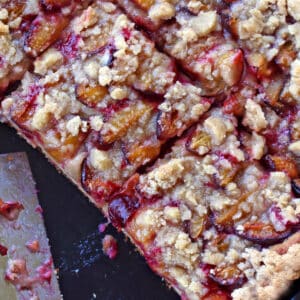
German Plum Cake (Zwetschgenkuchen)
Ingredients
- 3 + pounds Italian plums ,cut into quarters, pits removed
- 1 cup warm milk , *start with 3/4 and add extra to the dough as needed
- 1 1/2 tablespoons dry active yeast
- 4 cups all-purpose flour
- 3/4 cup sugar
- 1/2 teaspoon salt
- 1 stick butter (1/2 cup melted but not hot)
- 2 eggs
- 1 teaspoon quality pure vanilla extract
- For the Streusel:
- 1 cup all-purpose flour
- 1 cup sugar
- 1 teaspoon ground cinnamon
- 1/2 cup butter ,at room temperature
Instructions
- Dissolve the yeast into the 3/4 cup warm milk and let is sit for 5-10 minutes until frothy.
- Place the flour, sugar and salt in the bowl of a stand mixer and pour in the yeast mixture, melted warm (not hot) butter, eggs and vanilla extract. Give it an initial stir to combine the ingredients and then attach a dough hook and knead it on the bread setting ("2") for 4-5 minutes, adding the remaining 1/4 cup milk as necessary. (The dough will be sticky but should hold together fairly well. It will not be firm enough to knead into a ball, think of it more as a thick batter.) Cover it loosely with plastic wrap and set it in a warm, draft free place to rise for an hour or until about doubled in size.
- Generously butter a German Backblech extended to full length or a large jelly roll pan (at least 18 inches in length and 1 inch sides but even then the crust will be thicker than with the Backblech).
- Use your hands to spread the dough out across the full length of the pan, pressing it up against the sides. (It's yeast dough so it will resist, but just keep pushing it back into position the best you can. Once you put the plums on it, those will help keep it in place.) Lay the plums close together in rows over the whole length of the dough on the sheet pan. (If you want your cake a bit sweeter you can sprinkle it *lightly* with sugar or cinnamon-sugar if you prefer more cinnamon. I emphasize "lightly" because the more sugar you add the more watery the cake will be as the sugar liquifies during baking and your streusel will also "melt" in contact with it.)
- Set the pan in a warm place and let it rise for up to another hour.
- To make the streusel: Place all the ingredients in a medium-sized bowl and use your fingers to bring it all together. Work with the mixture until it's thoroughly combined and forms a rough sand and clumpy texture. Sprinkle the streusel over the top of the cake.
- Bake the cake on the middle rack of the oven preheated to 350 degrees for 30-35 minutes or until the top is golden.
- Let the cake sit for at least 10 minutes before slicing to let some of the liquid set. Slice the cake into squares and serve.
Notes
Nutrition
Originally published on The Daring Gourmet September 8, 2016

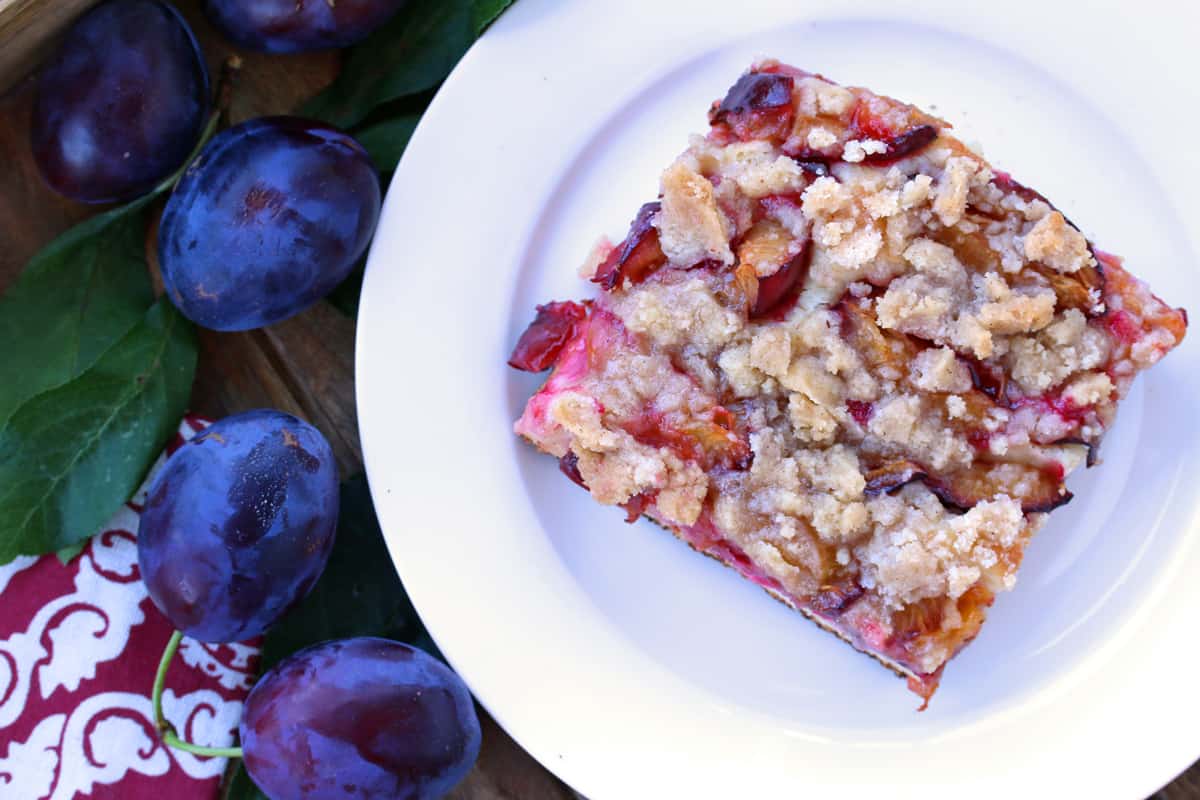
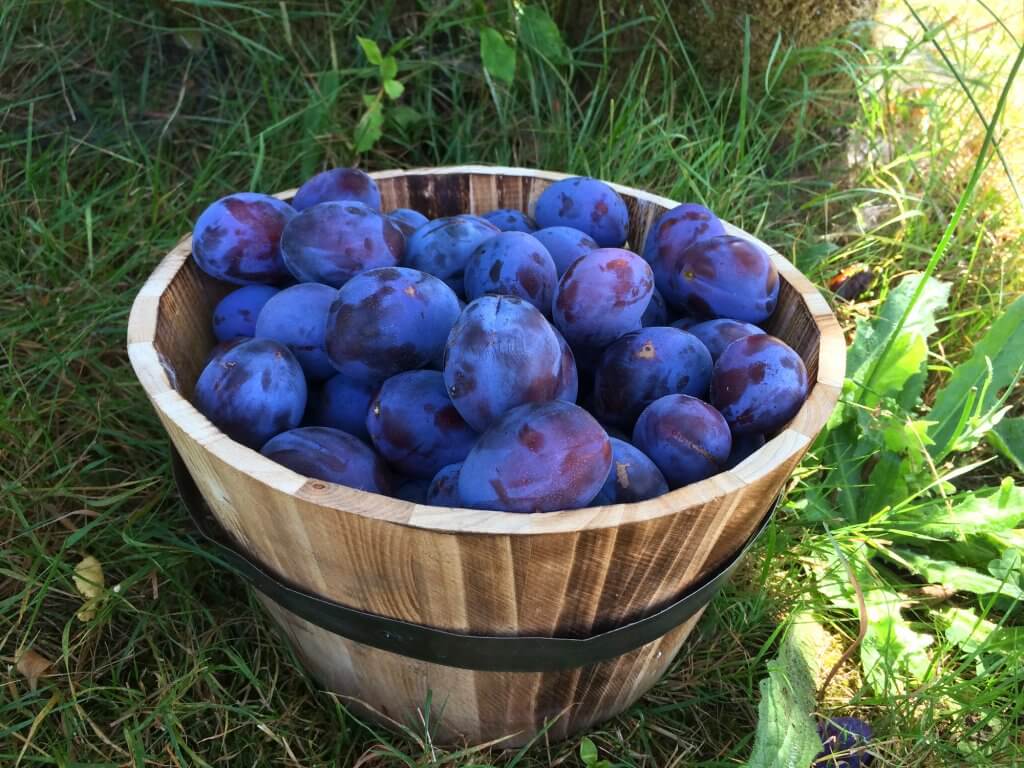
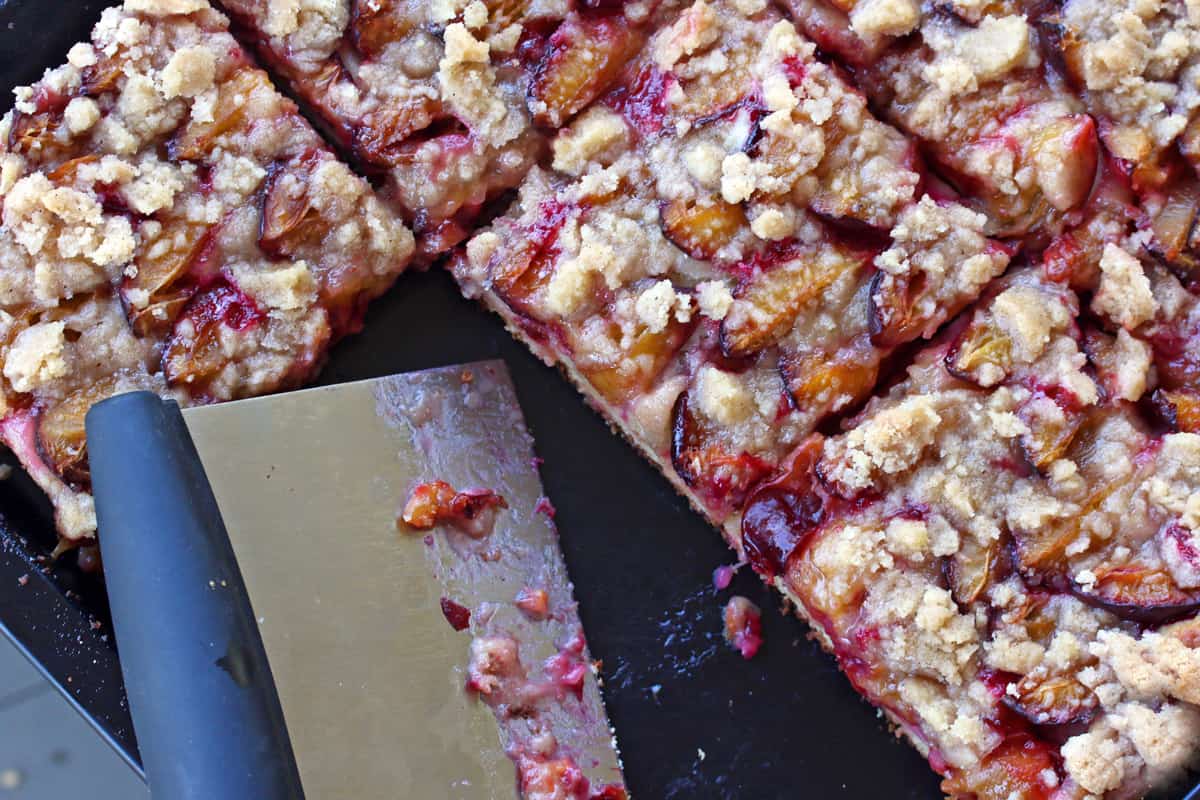
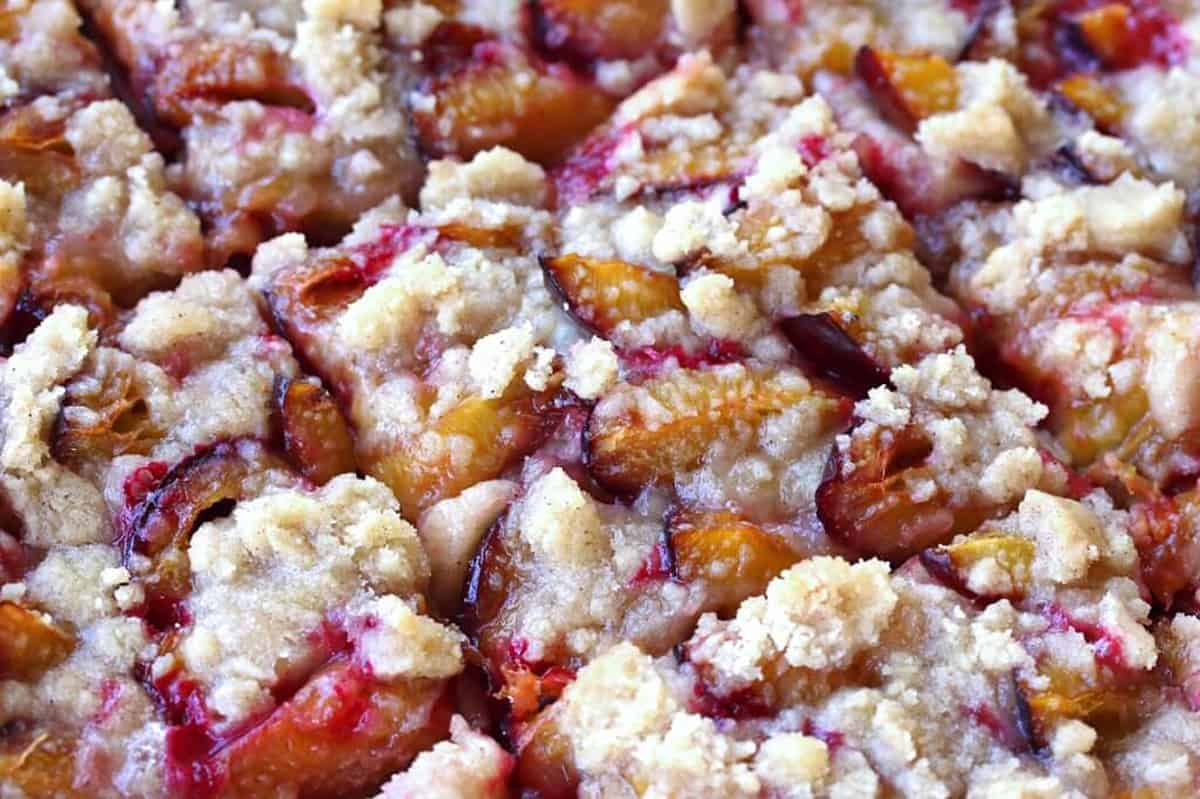
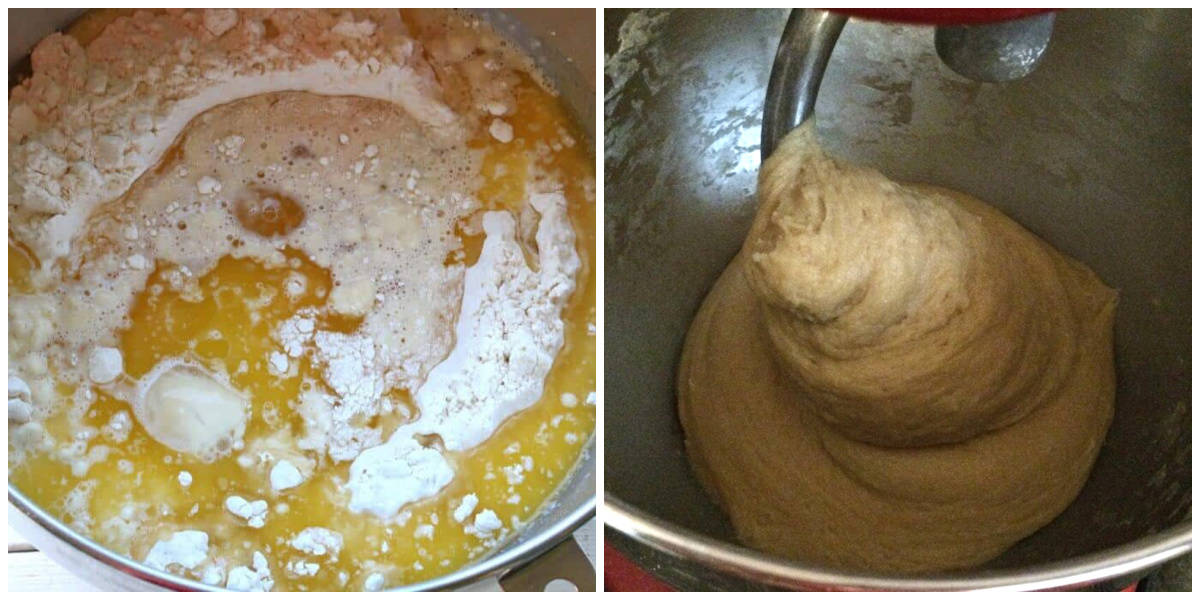
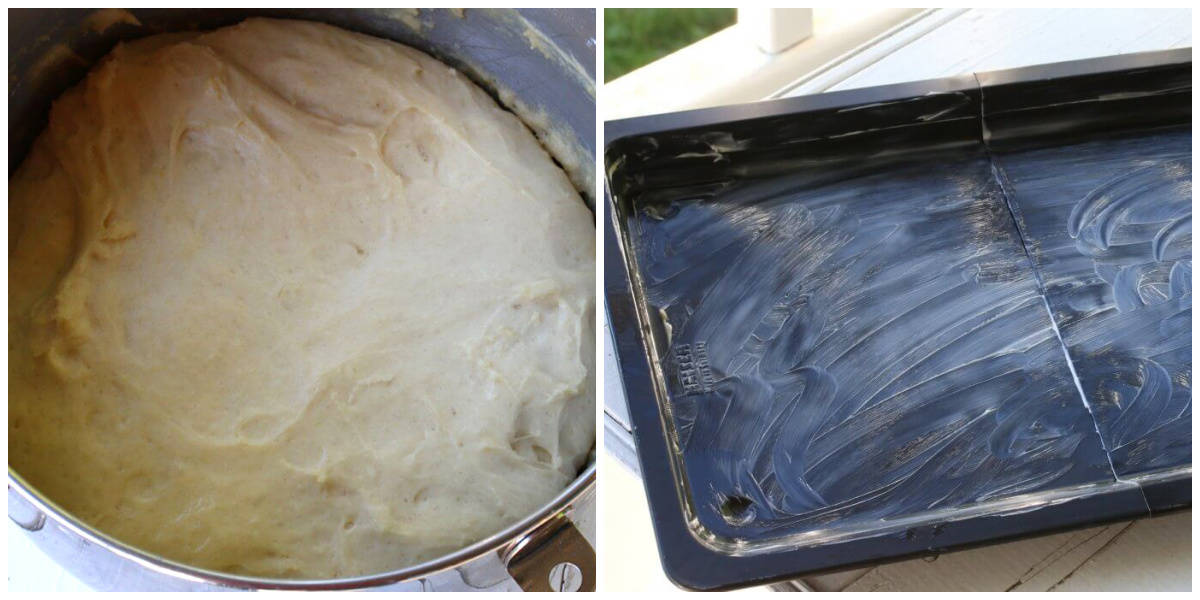
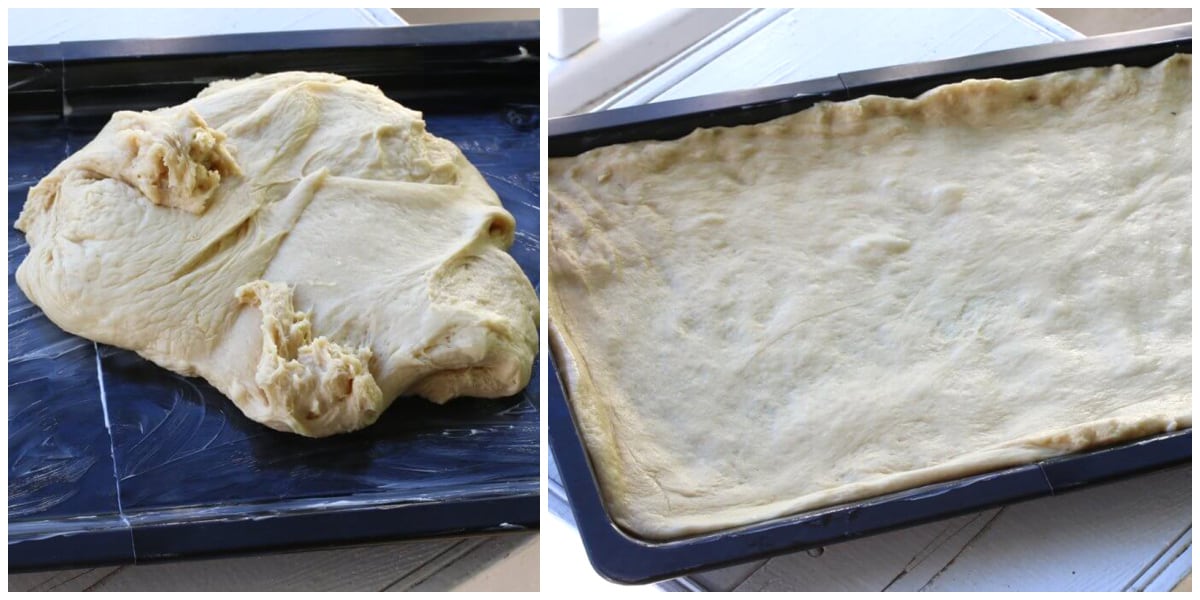
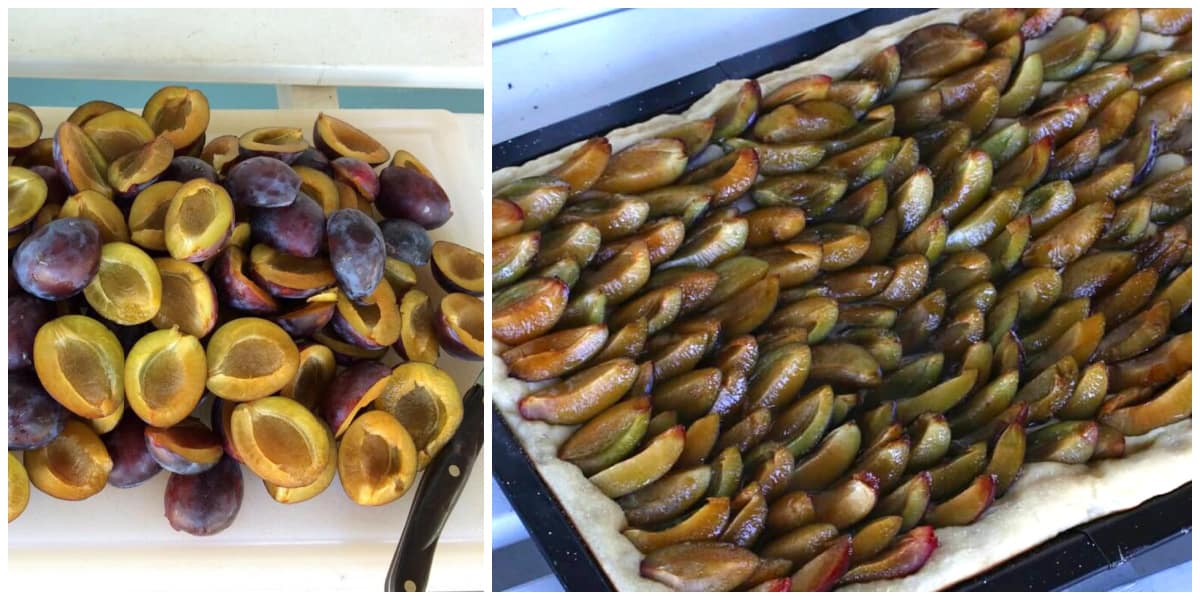
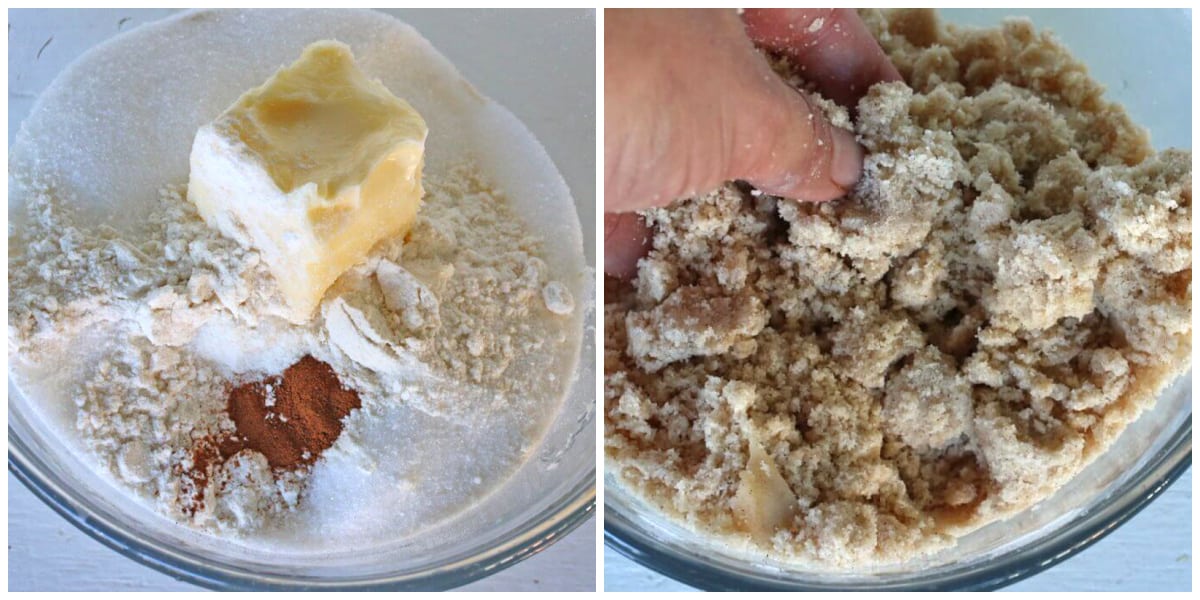
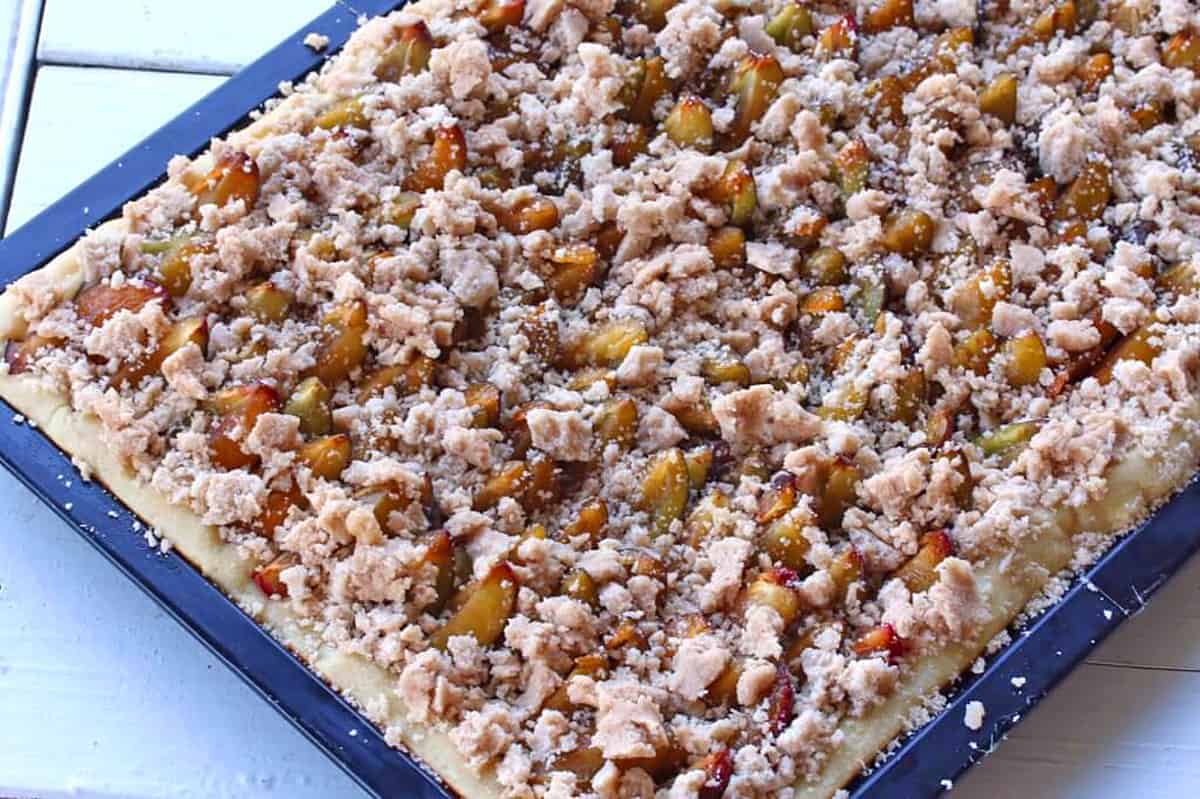
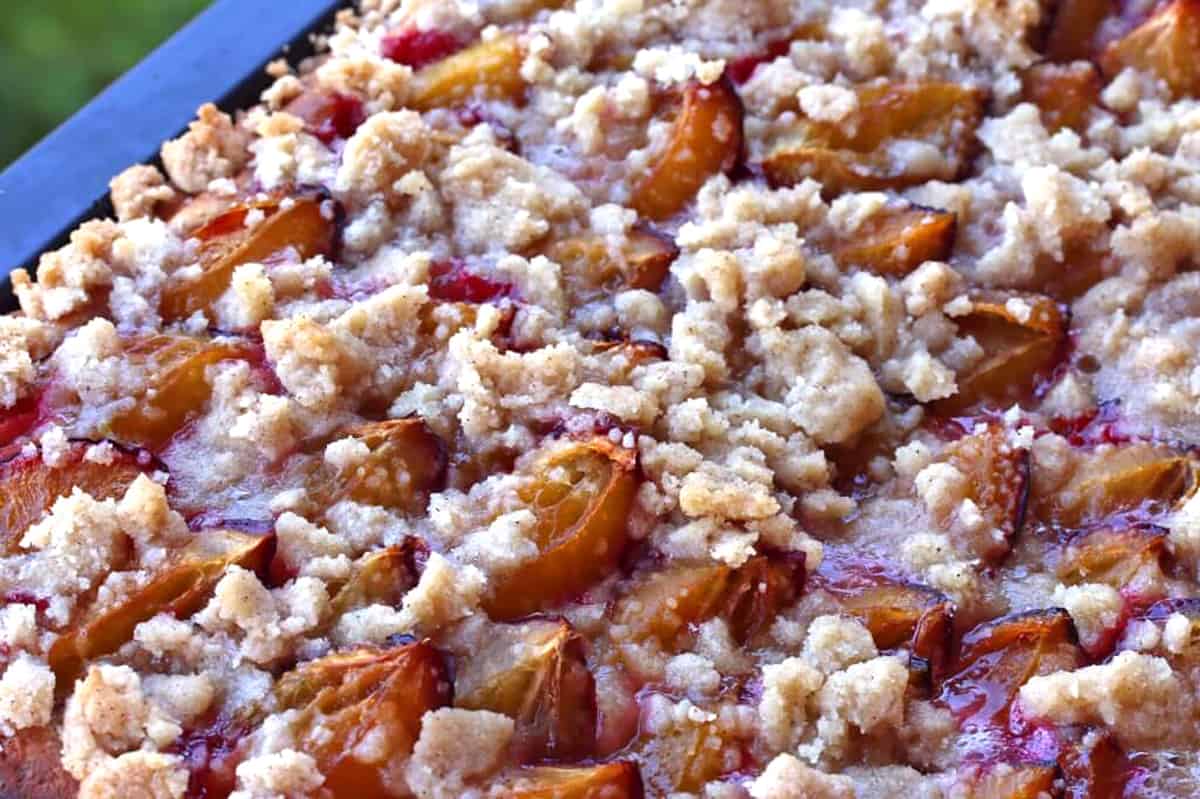
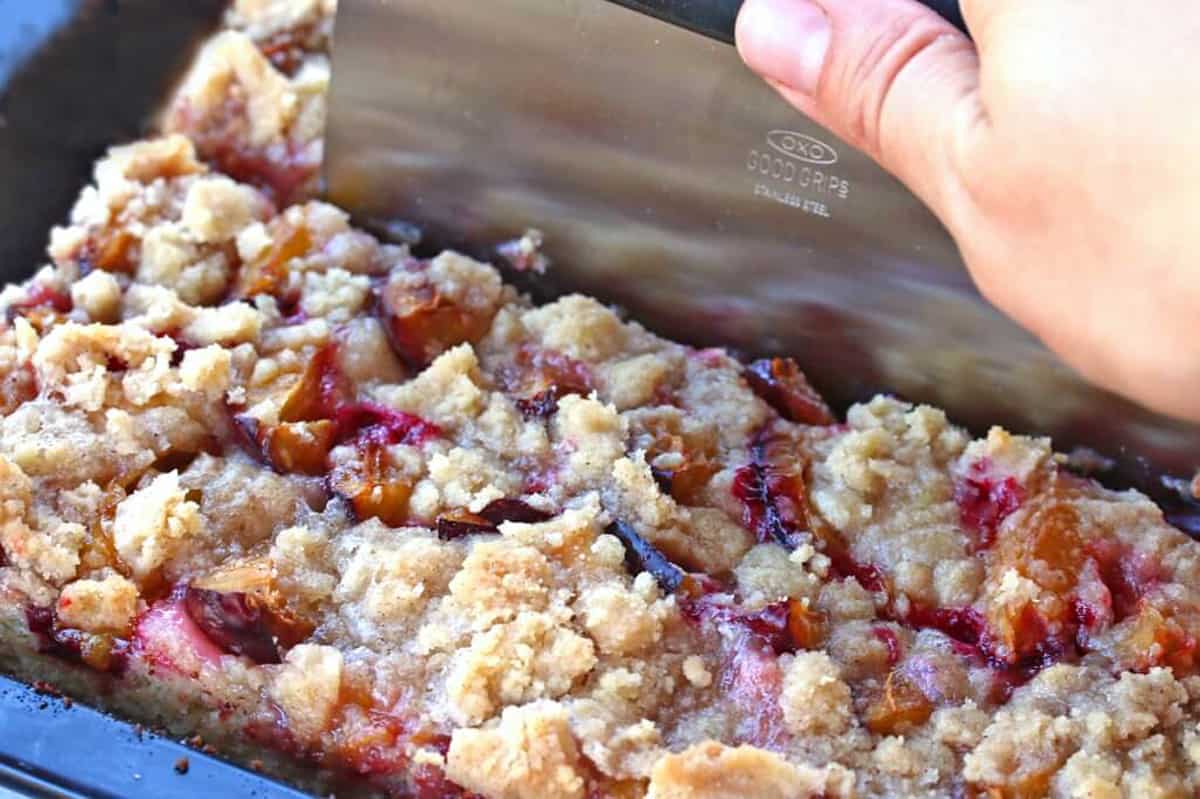
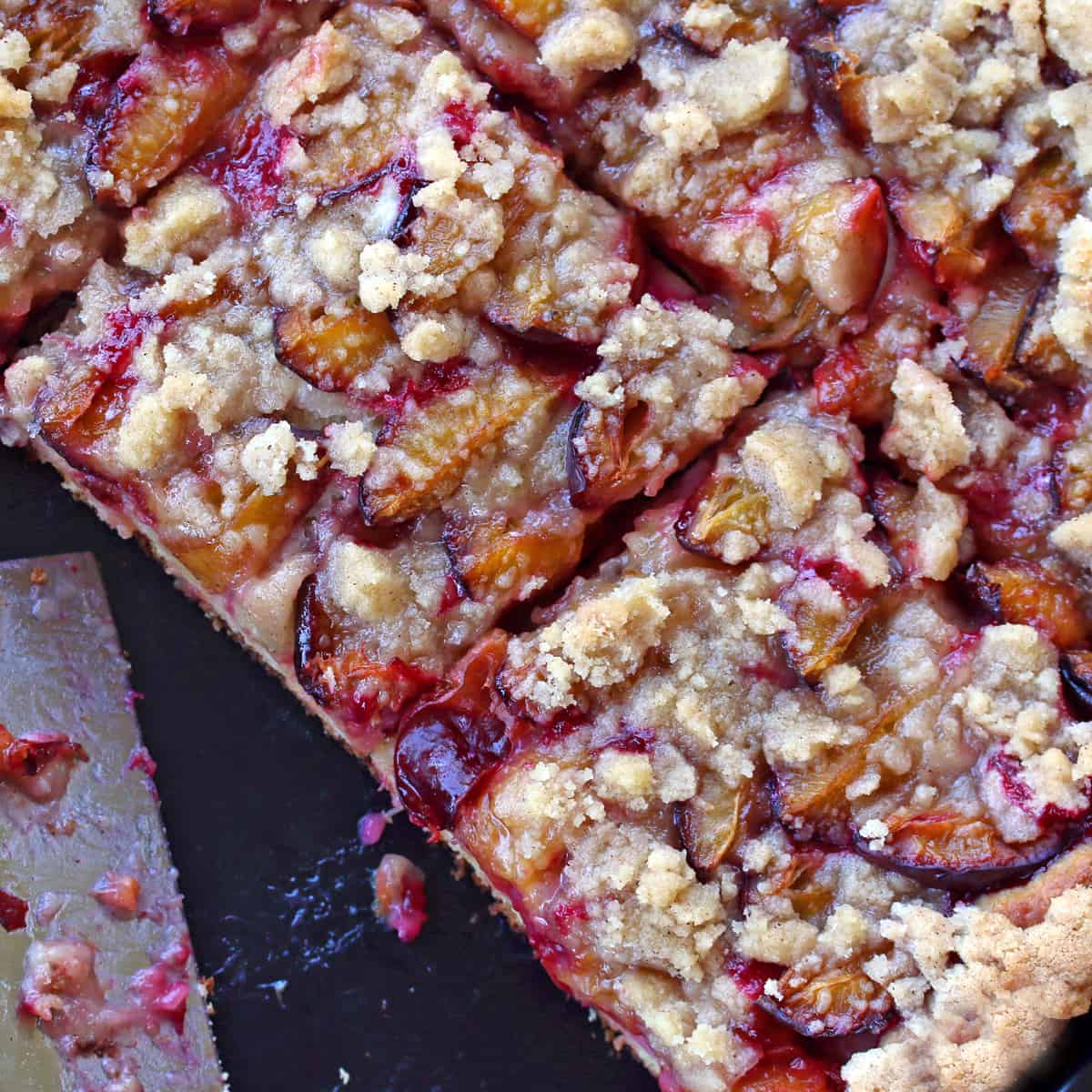


















My mother is from Stuttgart and loves this recipe. I’m just wondering about the 2 1/2 tablespoons of yeast to the flour proportions. Is that accurate? Thank you.
Hi Charmaine, I’m so glad to hear that! It’s 1 1/2 tablespoons and yes, that’s correct.
Hi Kim, just found your blog and it mouth is watering…. My mother and father made most of your recipes and I’m getting so excited that I finally found them. Both my parents are passed and trying to figure out the recipes my mom used to make is difficult. The roladan, bread dumplings, Rotkohl, mmmmmm. My mother made a dish with cabbage and ground beef that had a sweet taste to it and also caraway seeds?? Any idea what that would have been ?? Hoping to find it again.
Thank you so much, Doris <3 Yes, the dish you're describing is one that my Mutti as well and one that I continue to make in our family. It's a nice low-carb meal and when I make it for my kids I'll often serve it with a slice of homemade crusty sourdough bread, perfect for mopping up the flavorful juices. Here's a recipe for it that's basically the same way that I make it, you can click the translate option at the top your browser to translate the recipe into English if you need to: https://www.kochbar.de/rezept/506696/Weisskohl-Hackfleisch-Topf.html. Happy cooking! :)
Rookie here.Don’t have a stand mixer. Will a hand mixer do?
Hi Diana, most hand mixers aren’t powerful enough to knead dough. If yours is specifically made to do that then absolutely. Otherwise you can simply knead the dough by hand on a lightly floured surface, about 8-10 minutes.
Thank you for sharing all of these wonderful recipes, especially this one. They remind me of my Oma and taste like hers!
Thank you so much for the compliment, Shiloh, I appreciate it! <3
This was absolutely scrumptious! This brought back memories of visiting my Oma and tasted as good or better than I remembered.
Oh I’m so glad, Teresa, thank you very much!
Kimberly, this is truly something extra special. I can’t tell you how this made my day. It brought back so many memories of the Zwetschgenkuchen my Oma always made for us. I can’t thank you enough for this wonderful recipe, thank you.
Ursula, I am so happy that you enjoyed this and that it was a nostaglic walk down memory lane for you. Thank you so much for the feedback!
Hi Kimberly,
I love your plum bake (as well as many other recipes on your site!!)! My mother used to make it when I was little but sadly no longer had the recipe. But now I have yours and it is even better than the one I recall having as a kid! I’ve made it twice in as many months, made with supermarket-bought/imported plums: I will mark it on the calendar for August when the plums from the allotment are ripe – so much better when they’re freshly picked!
By the way, I highly recommend using Swedish Dansukker Pearl / Nib Sugar (available in 500g box from Amazon) in the streusel. These sugar nibs are bigger than your bogstandard kitchen sugar and don’t melt/caramelise at 350 degrees F.
Using nib sugar for streusel preventa the sugar caramelising and keeps the cake dough nice light and doughy with just the right level of moistness.. these sugar nibs are small enough to be used in a streusel to get the desired effect.
There are bigger pearl sugar nibs (5-6mm, for use in Belgian/Liege waffles) but I those are too big for a streusel.
Thank you/Vielen Dank
Thank you so much for the feedback and the compliment, Martin, I really appreciate it! <3 Thanks also for sharing the tip about the pear sugar. I've got LOTS of the big 5-6mm pearl sugar that we brought back with us from Belgium for the waffles but agreed, that size is definitely be too big for this purpose.
My local Costco carries Italian plums at this time of year. Last year I bought a case, sliced in half and froze them, though never got around to making Tante Gisela’s plum cake. I am excited to use your recipe. (Hers is in German which I don’t speak) Her version sounds similar to yours though without the topping. It didn’t cross my mind before freezing all of those plums, but…can I use plums which have been frozen? Thaw them first? You sound like the queen of plum knowledge, so trust your valued knowledge. Thank you.
Hi Cathy! Yes exactly, just thaw and drain them thoroughly first and you’re good to go. Happy baking and please let us know how it goes!
It’s a tasty recipe, but authentic? Sorry. Not even close. I knew when I saw baking powder that this wasn’t going to be Stuttgarter Zwetschgenkuchen, which has a more cookie-like crust and slight hints of almondy/anise-y flavors.
That said, it’s a decent recipe. I added almond extract to the crust and the streusel, which got me closer to the flavors, but I had no sliced almonds on hand, drat the luck, which I’m accustomed to having in the topping.
All said, I’d recommend this recipe with added almond extract and some pinches of salt along the way. But for true zwetschgenkuchen, a buttery, dense, cookie-like crust is what’s called for. Would love to see a variation on this recipe with that.
Tracy, I’m not sure what you’re talking about – and truthfully you don’t either. “I knew when I saw baking powder”….there is no baking powder in this recipe. This cake is made with a yeast-based dough. As I note in my blog post, some regions make their plum cake with a shortcrust base (or cookie-like crust as you call it) while other regions use a yeast dough base. I’m from Stuttgart (Baden-Württemberg) where yeast dough is the most traditional. In fact, my family and I just spent the last two weeks in Stuttgart – we flew back just last night. And while we were there I of course made numerous trips to the local bakeries (too many, lol!) and enjoyed, among other things, this delicious Zwetschgenkuchen.
Absolutely delicious..easy to follow recipe.
Thank you so much, Sue!
Making this a 2nd time in under 2 weeks, though we are waiting for the Italian Plums to become available in Maryland, so using California Black Plums. My 94 year old Schwiegermutter is native to the same region of Germany you are from, and I have been practicing many of your old world recipes to give her a taste of home since its very difficult for her to cook at this age. Her mother taught her to sprinkle unseasoned breadcrumbs on the dough before placing the plums, then sprinkle cinnamon/sugar moderately over the plums before 2nd rise and bake. She says the breadcrumbs absorb most of the liquid, and somewhat caramelizes the top vs using streusel.
Heading to OctoberFest in Munich in 2 weeks, and looking forward to the food, wine, and of course beer from the beautiful southern Germany region.
Hi Mark, greetings from Munich – I’m here right now! :) I’m so happy to hear you’ve been making some of my recipes and appreciate your feedback from your Schwiegermutter. Have a wonderful time in southern Germany!!
I only used half the dough. how can save the other half? can I freeze it?
Hi Joan, yes you can freeze it.
Hi Kim, because I cannot purchase the “Zwetschgen” in my area, do you think the cake will turn out well with canned Italian plums?
Absolutely, Pia, just drain them well. Happy baking!
Love love love this recipe! My Oma used to make for me all the time. Every summer flying back to Germany, she would have ready for us the first week! Very close, especially with the type of ingredients we could get here. Thank you for sharing.
I’m so glad you enjoyed it, Diana, thank you!
Thank you so much for this authentic recipe!! My Bavarian mutti brought a similar recipe to America after my dad completed flying in the Berlin Airlift 74 years ago. Tragically, her beloved cookbook was lost a few years ago and nobody could replicate all the delicious recipes it contained after she went to heaven. That is until I came across your recipe! It turned out exactly the way it’s supposed to taste and easier and a whole lot easier to make with a dough hook. You see, mutti was old-school and insisted mixing the dough by punching it over and over in her favorite aluminum pot. When we heard that “wop-wop-wop” mixing sound, we kids would come running to get a few bites of that tasty, sweet yeast dough. My wife reported that the black plums hit the local grocery store today, so you know what I’ll be doing tomorrow!!!
I am so happy you found what you were looking for, Larry, and that you can now recreate your mom’s special German plum cake! Thank you so much for the feedback and for sharing those precious memories <3